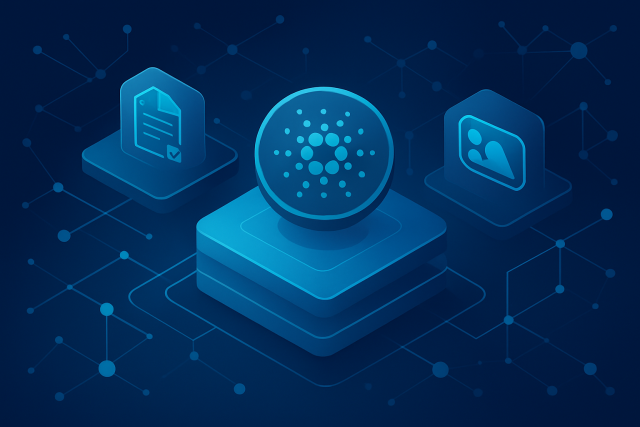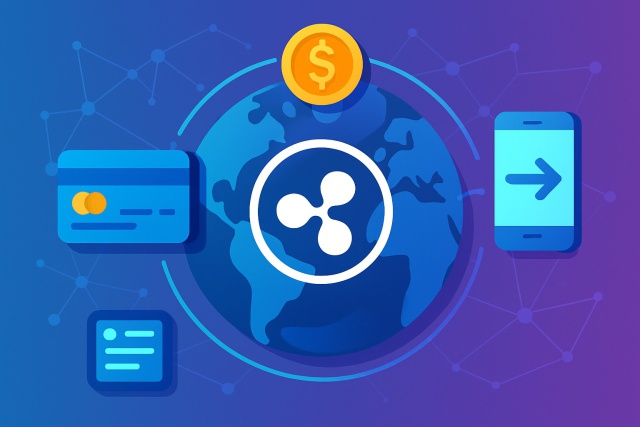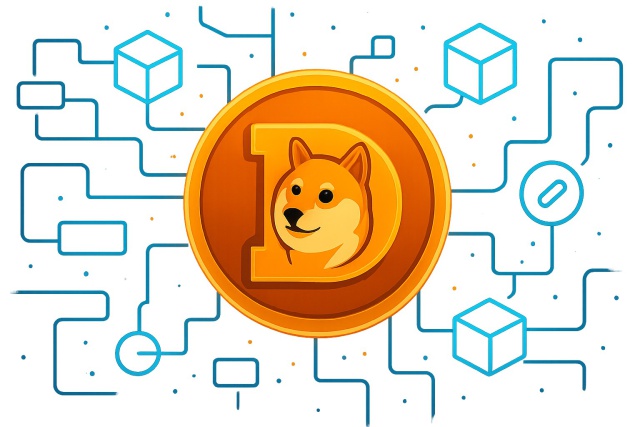What Is Litecoin and How It Differs From Bitcoin?


Litecoin is one of the earliest and most well-known altcoins to hit the cryptocurrency stage. It arrived shortly after Bitcoin and acted as a peer-to-peer digital currency designed for quick borderless transactions without relying on middlemen like banks. While it shares much with Bitcoin, Litecoin tweaks some aspects to speed up transaction confirmations and make mining fairer for everyday users.
What Litecoin Is All About
Litecoin is a peer-to-peer cryptocurrency that came into the picture as a leaner, quicker alternative to Bitcoin. It was launched in 2011 by Charlie Lee who aimed to address some of Bitcoin’s hiccups—things like slower transaction speeds and the clunkier mining process—while still holding on tight to the idea of a decentralized system.
Litecoin was created to handle payments faster and with lower fees, making it a bit more wallet-friendly for everyday transactions. While Bitcoin sometimes feels the pinch with slower confirmation times when the network’s crowded, Litecoin’s design leans heavily on speed.
A Quick Dive Into the Basics
Litecoin operates on a decentralized public ledger known as the blockchain, where every single transaction is shared across the entire network and tucked safely into blocks. These blocks are then locked down and stitched onto the chain via a consensus method called proof-of-work, which basically challenges miners to crack some pretty tough math puzzles.
- Litecoin runs on a decentralized network of nodes that diligently check transactions and keep the blockchain happily up to date.
- Miners are basically in a race to crack cryptographic puzzles, all to confirm and add new blocks. It’s a bit like a digital marathon, really.
- Transactions get verified using digital signatures, which do a great job of keeping things secure and making sure everything’s the real deal.
- Its proof-of-work system acts like the network’s watchdog, supporting integrity and putting a serious damper on fraud.
- Litecoin employs some pretty advanced cryptography tricks to protect your transactions and manage how new coins are released, giving you peace of mind.
- Users stash their Litecoins in digital wallets, which come with unique cryptographic keys—think of them as your super-secret digital safe.
A Quick Dive into the History and Evolution of Litecoin
Litecoin kicked off as a fork of Bitcoin's open-source code designed to speed up transactions and increase the total number of coins in circulation. It was the brainchild of Charlie Lee, a former Google engineer who rolled it out in 2011 with the goal of ironing out some of Bitcoin’s early scalability wrinkles while sticking to a solid decentralized foundation.
- Litecoin made its grand entrance back in October 2011, thanks to Charlie Lee.
- It was crafted to breeze through transactions roughly four times faster than Bitcoin, which definitely caught some eyes.
- By introducing the Scrypt hashing algorithm, it shook up the mining scene with a fresh approach.
- Merchants and crypto enthusiasts alike started taking notice.
- Some community-driven upgrades and the addition of the Lightning Network steadily improved its scalability, much to everyone’s relief.
Important Differences Between Litecoin and Bitcoin You Should Know
Litecoin is built on the same fundamental technology as Bitcoin but carves out its own identity through a few technical and practical twists that influence how it performs and feels in everyday use. These differences affect transaction speed, mining techniques, supply limits and even network accessibility.
| Feature | Bitcoin (BTC) | Litecoin (LTC) |
|---|---|---|
| Launch Year | 2009 | 2011 |
| Creator | The mysterious Satoshi Nakamoto | Charlie Lee, a former Google engineer |
| Block Generation Time | Roughly 10 minutes on the dot | Around 2.5 minutes, pretty snappy |
| Maximum Supply | Capped at 21 million coins, making it quite scarce | A more plentiful 84 million coins, giving it some wiggle room |
| Hashing Algorithm | SHA-256, the classic workhorse | Scrypt, designed to keep things a bit more accessible |
| Average Transaction Fee | Usually on the higher side, especially when demand spikes | Typically lower, which helps for small everyday payments |
| Typical Use Cases | Seen as digital gold for holding value and big transfers | Great for faster payments and those tiny microtransactions you don’t want to fuss over |
| Consensus Mechanism | Proof of Work, the granddaddy of consensus algorithms | Also Proof of Work, keeping it tried and true |
| Network Security | Rock solid, thanks to massive mining power backing it up | Strong and secure, plus easier mining access for enthusiasts |
These differences bring about some real-world effects you cannot ignore. Litecoin's quicker block time usually means transactions zip through faster and makes it a natural fit for everyday payments. It runs on the Scrypt algorithm which lowers the entry bar for mining gear and lets more people join the party. Plus with a bigger maximum supply, Litecoins are definitely more plentiful. While some argue this chips away at scarcity, it often helps with wider distribution.
Key Technical Differences in Consensus and Mining
A key technical difference between Litecoin and Bitcoin lies in the hashing algorithm each uses. Bitcoin sticks to SHA-256 which demands specialized high-powered hardware—ASICs—to mine efficiently. Litecoin, on the flip side, opts for the Scrypt algorithm which leans more on memory rather than raw computation power. A wider crowd of miners even those using regular consumer gear can pitch in to secure the network giving decentralization a real boost. Both rely on proof-of-work to verify blocks but Litecoin’s approach tends to open the door to more miners. Of course, there’s a trade-off in hash power and overall network security.
How Quickly Transactions Happen and What They Actually Cost You
Litecoin’s block time clocks in at about 2.5 minutes which is a neat jump ahead compared to Bitcoin’s usual 10-minute wait. That speedier confirmation means users get their transactions sorted out quicker without endless twiddling of thumbs. Plus because Litecoin sips rather than gulps network resources its transactions typically come with much lower fees.
How Shifts in Supply Can Throw a Wrench in Inflation Control
Litecoin’s total maximum supply is capped at 84 million coins, four times the 21 million limit set for Bitcoin. This extra-large supply was crafted to make Litecoins easier to get and to help nudge broader usage along. Now while having more coins might make you think there’s less scarcity, Litecoin’s long-term value seems to hinge more on how widely its network gets adopted rather than scarcity alone.
Real-World Examples and How They are Actually Put to Work
Litecoin has really carved out a neat little niche as a go-to payment option, thanks to its speedy transactions and low costs that don’t break the bank. You’ll find more and more merchants warming up to it as a solid alternative for digital payments, especially in those moments when Bitcoin’s slower transaction tempo tends to throw a wrench in the works. On top of that, Litecoin doubles as a handy testing ground for fresh blockchain technologies.
- More online and brick-and-mortar merchants are jumping on the Litecoin bandwagon to speed up checkout and make life easier at the register.
- For small payments like tipping your barista or sending tiny amounts, Litecoin’s low fees really shine—it’s a neat saving that adds up.
- When it comes to cross-border remittances, Litecoin’s speedy settlement times help people save on costly fees and delays.
- Litecoin has also been an experimenter’s playground for testing sidechains and second-layer solutions, proving its flexibility.
- Sending money directly from one person to another is a breeze thanks to Litecoin’s almost instant confirmation speeds—no long waits.
Litecoin's network continues to broaden its reach with major payment processors and cryptocurrency exchanges worldwide.
Frequent Misunderstandings About Litecoin That Often Trip People Up
Litecoin has been around the block a few times but still gets misunderstood, especially by newcomers who trip over common misconceptions. Many write it off as a carbon copy of Bitcoin and miss the unique perks it offers. Some assume it’s old news and less secure. Taking a moment to clear the air sheds light on Litecoin’s distinct goals and ongoing tweaks under the hood.
- Litecoin keeps chugging along with regular protocol updates and a loyal community backing it up.
- It shines with quicker block times and relies on the trusty Scrypt mining algorithm.
- Its security holds strong thanks to a dedicated crew of miners and developers who stick with it.
- Litecoin enjoys broad acceptance and appears on major exchanges and payment platforms.
- With ongoing innovation, it seems poised to carve out its own niche alongside Bitcoin and steadily grow in usefulness over time.
Litecoin isn’t really a direct rival to Bitcoin, but more like its trusty sidekick—a complementary currency and a handy testbed for new technologies that could very well shape the broader cryptocurrency world down the line. — Crypto Analyst Jane Doe
A Friendly Guide to Buying and Storing Litecoin Safely
Getting Litecoin is straightforward and you have several options to make it happen: centralized exchanges, peer-to-peer platforms, or the occasional Litecoin ATM if you are lucky enough to spot one nearby. Keeping security at the forefront is key when buying and storing Litecoin. You’ll want to make sure your wallets are locked up tight with strong passwords and reliable backups just in case.
- Buy Litecoin through well-known centralized exchanges like Coinbase, Binance or Kraken using either fiat currency or crypto—whichever floats your boat.
- If you like a more hands-on personal touch, try peer-to-peer trading but do yourself a favor and thoroughly check the other party's reputation before diving in.
- Litecoin ATMs can be a lifesaver for quick cash-to-LTC swaps if you happen to be near one of those lucky locations.
- When it comes to security, stashing your Litecoins in hardware wallets like Ledger or Trezor is usually your best bet—think of them as your crypto's bodyguards.
- For grabbing your coins on the fly, mobile wallets such as Trust Wallet or Exodus are handy and easy to use.
- Paper wallets are a neat option for cold storage but they demand careful printing and a safe spot—you wouldn’t want your grandma accidentally recycling them!
- Always turn on two-factor authentication and choose strong unique passwords for your exchange accounts and wallets. It might sound like a pain but it’s one of those essentials you really can’t afford to skip.
Looking Ahead Litecoin's Place in the Ever-Evolving Crypto World
Litecoin keeps evolving thanks to a dedicated crew of community members and developers who are always tinkering under the hood. The upcoming upgrades mainly focus on boosting scalability and tightening privacy features. They also smooth out the process of interacting with other blockchains.
Interest is also picking up in adding smart contract capabilities and beefing up privacy features on Litecoin's network. These tweaks could really open the door to fresh opportunities in decentralized finance (DeFi) and confidential transactions.
Frequently Asked Questions
Is Litecoin just a copy of Bitcoin, or does it offer unique advantages?
Litecoin is far from just a copycat of Bitcoin. It was crafted to speed up transactions and make mining friendlier for everyday users. Block times are about 2.5 minutes compared to Bitcoin's 10 minutes. With lower fees and the use of the Scrypt algorithm, Litecoin often shines for everyday payments. It also attracts a more diverse crowd of miners, which is a nice bonus.
Why does Litecoin have a higher supply cap (84 million) compared to Bitcoin’s 21 million?
The bigger supply cap was designed to make Litecoin more accessible and practical for a wider audience. While its scarcity works differently from Bitcoin’s, both keep inflation in check through scheduled halvings. In my experience, Litecoin’s value leans more heavily on its usefulness and adoption rather than just the supply limit.
Can Litecoin be used for real-world purchases, or is it mainly for trading?
Absolutely yes. Many merchants accept Litecoin because transaction confirmations are quick and fees stay low. It’s a solid choice for retail shopping, small payments, and cross-border transfers. It keeps getting better as more payment processors and exchanges join almost daily.
Is Litecoin mining easier for beginners than Bitcoin mining?
Litecoin’s Scrypt algorithm means you don’t need specialized ASIC rigs, making it less intimidating for casual miners. Profitability still depends on your gear and electricity costs. Before diving in, it’s smart to research mining pools and what consumer-friendly setups look like today.
How can I securely store Litecoin after buying it?
For top-notch security, individuals often recommend hardware wallets like Ledger or Trezor—these are like your personal Fort Knox. If you want convenience, trusted mobile wallets such as Trust Wallet do a great job. Whatever route you choose, always set up two-factor authentication, back up your private keys safely, and avoid leaving large sums on exchanges—better safe than sorry.
What’s next for Litecoin’s development?
Looking ahead, Litecoin's roadmap focuses on improving scalability, adding privacy features like MimbleWimble, and exploring smart contracts. These upgrades aim to expand Litecoin’s role in decentralized finance and confidential transactions while maintaining its key perks: speed and low cost.
Useful Links
Start Your Crypto Journey with Coinbase Today
Ready to enter the cryptocurrency market but unsure where to begin? Coinbase makes buying, selling, and storing digital assets simple and secure for beginners and experts alike.








